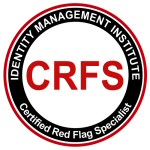Affluent Wealthy

A recent identity theft study conducted by Experian places the affluent wealthy individuals at the top of the list for identity theft targets. Although everyone is vulnerable to identity theft, this study conducted by one of the major credit reporting agencies in the world confirms what we’ve said before that high target identities including the affluent rich and famous are often and more likely to be the targets and victims of identity fraud. Why? Because that’s where the biggest fraud opportunities are and where fraudsters get the biggest bang for their buck.
According to the study, the typical affluent wealthy people live in upscale suburban neighborhoods where they employ many personal service providers to help them with gardening, baby sitting, house cleaning, shopping, office and closet organizing, and interior decoration to name a few. These unsuspecting high target individuals have plenty of cash in the bank, high limit or no limit credit lines, as well as occasional fame to attract the curiosity of identity thieves.
It was also reported in the study that "Affluent Suburbia" or the wealthiest of the identity theft victims living in the suburban neighborhoods are 43% more likely to become identity fraud victims, while the "Upscale America" or the most educated individuals are 22% more likely to fall victims.
Without going too much into the details of the study, the analysis also found that higher income individuals, and those who own homes and luxury cars, or live in high density population areas are much more likely to become identity theft victims.
The part of the study that got my attention the most is that the affluent wealthy individuals who travel abroad, play tennis, go skiing, or have an interest in cultural arts are even more likely to be targets and victims of identity theft. Although the skiing part is a little mystery to me, my guess is that trips to resorts or abroad are organized by personal organizers in coordination with the upscale resorts . Also, playing tennis or showing interest in cultural arts often require membership to upscale associations. That being said, the insider factor can not be overlooked whereby insiders working for these upscale resorts and organizations where the affluent wealthy commonly visit or belong to, either directly commit fraud with their access to privileged member or visitor information, or, collide with outsiders sell the personal information of their clients for a quick profit.
In conclusion, not only the affluent wealthy individuals are more likely to be the victims and targets of identity theft, but they also risk losing more if they become victims of identity theft. The level of protection necessary to safeguard the affluent and wealthy people against identity theft depends on the risk that each individual is willing to take considering the required cost and time in the protection equation. A safe identity is not without cost or efforts which must be considered when we all decide our identity protection strategies and plans. Some identity theft risks may not be worth our protection efforts because they represent a lower risk which we are willing to live with.








